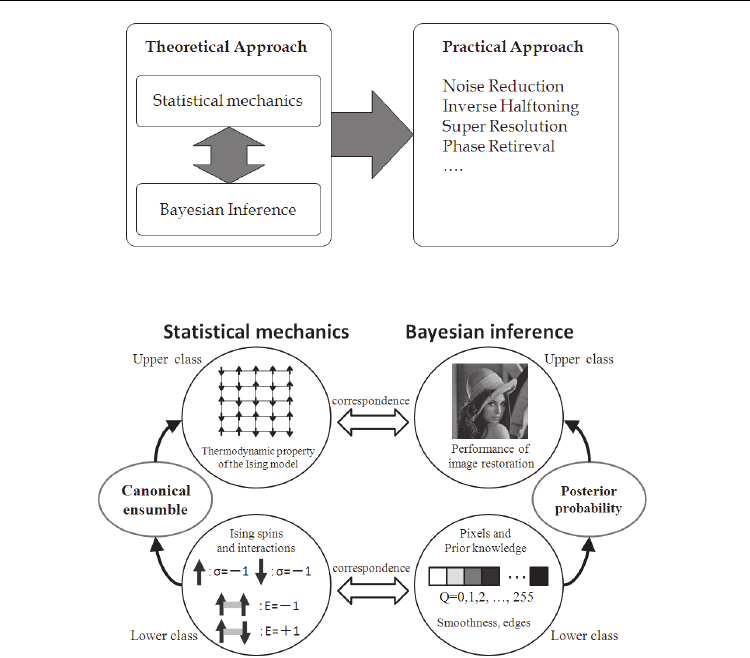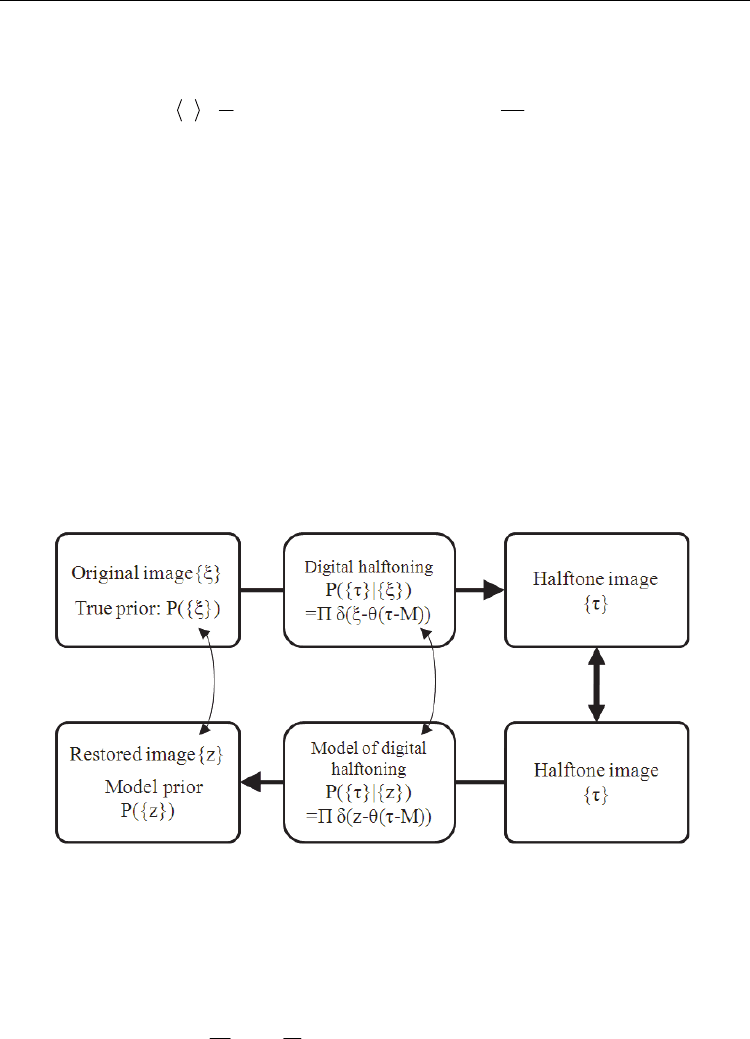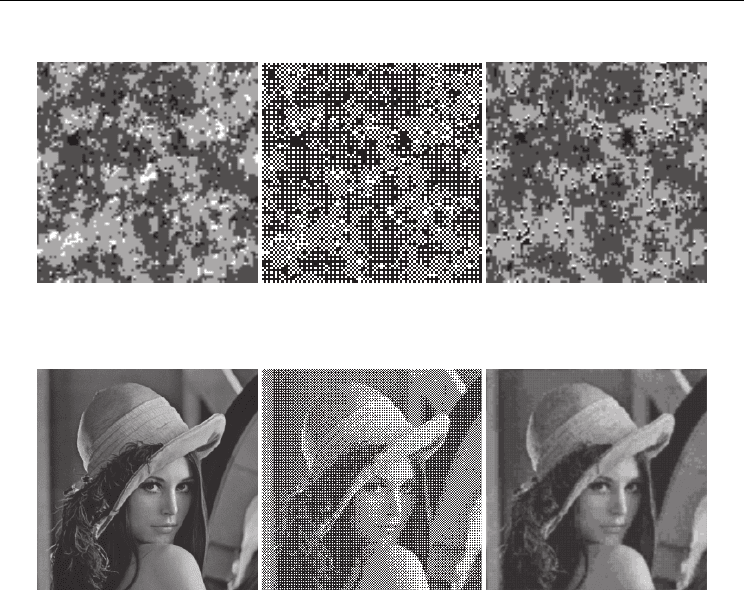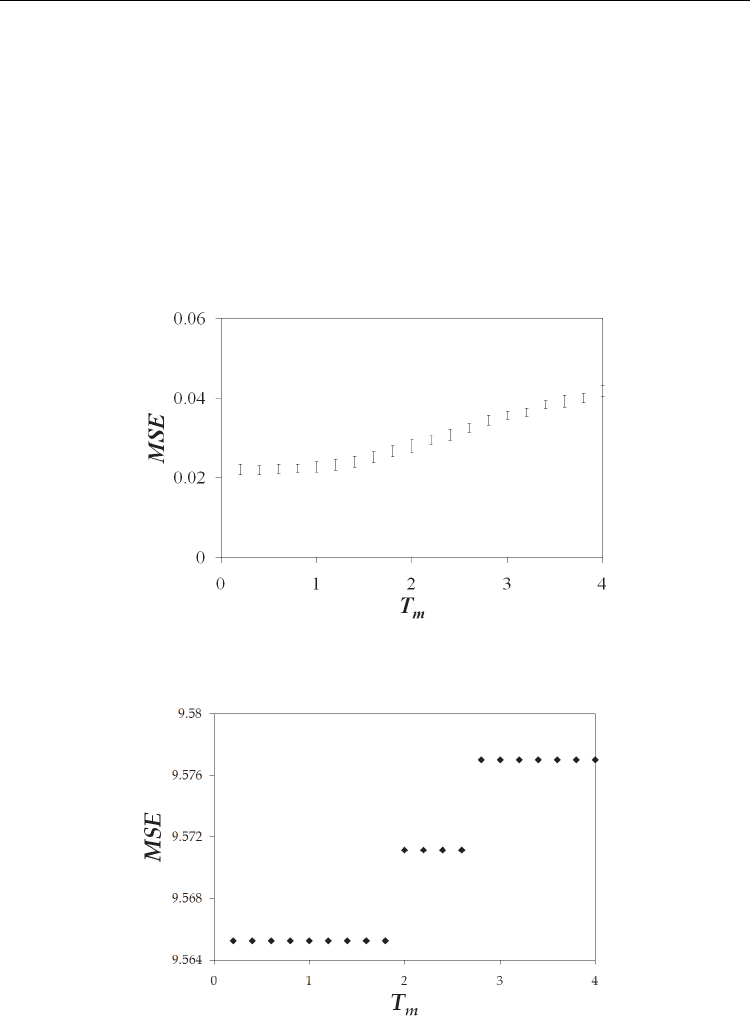Awrejcewicz J. Numerical Simulations of Physical and Engineering Processes
Подождите немного. Документ загружается.


On the Double-Arcing Phenomenon in a Cutting Arc Torch
523
Boulos, M.; Fauchais, P. & Pfender, E. (1994). Thermal Plasmas, Fundamentals and Applications,
Vol1, Plenum Press, New York.
Colombo, V.; Concetti, A.; Ghedini, E.; Dallavalle, S. & Vancini, M. (2009). High–speed
imaging in plasma arc cutting: a review and new developments. Plasma Sources Sci.
Technol., 18, 023001.
Dowell, D. H.; King, F. K.; Kirby, R. E. & Schemerge, J. F. (2006). In situ cleaning of metal
cathodes using a hydrogen ion beam. Phys. Rev. ST Accel. Beams, 9, 063502.
Franklin, R. N. (2002). What significance does the Bohm criterion have in an active colisional
plasma–sheath? J. Phys. D: Appl. Phys., 35, 2270.
Franklin, R. N. (2002). You cannot patch active plasma and collisionless sheath. IEEE Trans.
Plasma Sci. 30 (2002) 352.
Franklin, R. N. (2003). The plasma–sheath boundary region. J. Phys. D: Appl. Phys., 36, R309.
Franklin, R. N. (2003). There is not such thing as a collisionally modified Bohm criterion. J.
Phys. D: Appl. Phys., 36, 2821.
Franklin, R. N. (2004). Where is the sheath edge? J. Phys. D: Appl. Phys., 37, 1342.
Freton, P.; Gonzalez, J. J.; Camy Peyret, F. & Gleizes, A. (2003). Complementary
experimental and theoretical approaches to the determination of the plasma
characteristics in a cutting plasma torch. J. Phys. D: Appl. Phys., 36, 1269.
Freton, P.;Gonzalez, J. J.; Gleizes, A.; Camy Peyret, F.; Caillibotte, G. & Delzenne, M. (2002).
Numerical and experimental study of a plasma cutting torch. J. Phys. D: Appl. Phys.,
35, 115.
George, D. W. & Richards, P. H. (1968). Boundary conditions in wall-stabilized arc columns.
Brit. J. Appl. Phys. (J. Phys. D), 1, 1171.
Ghorui, S.; Heberlein, J. V. R. & Pfender, E. (2007). Non-equilibrium modelling of an
oxygen–plasma cutting torch. J. Phys. D: Appl. Phys., 40, 1966.
Girard, L.; Teulet, Ph.; Razafinimanana, M.; Gleizes, A.; Camy-Peyret, F.; Baillot, E. &
Richard, F. (2006). Experimental study of an oxygen plasma cutting torch: I.
Spectroscopic analysis of the plasma jet. J. Phys. D: Appl. Phys., 39, 1543.
Goldston, R. J. & Rutherford, P. H. (1995). Introduction to Plasma Physics, Institute of Physics
Publishing Bristol and Philadelphia IOP.
González-Aguilar, J.; Pardo, C.; Rodríguez-Yunta, A. & García Calderón, M. A. G. (1999). A
theoretical study of a cutting air plasma torch. IEEE Trans. Plasma Sci., 27, 264.
Guo, S.; Zhou, Q.; Guo, W. & Xu, P. (2010). Computational analysis of a double nozzle
structure plasma cutting torch. Plasma Chem. Plasma Process, 30, 121.
Hackam, R. (1969). Total secondary ionization coefficients and breakdown potentials of
hydrogen, methane, ethylene, carbon monoxide, nitrogen, oxygen and carbon
dioxide between mild steel coaxial cylinders. J. Phys. B (Atom. Molec. Phys.), 2,
216.
Hill, R. J. & Jones, G. R. (1979). The influence of laminar and turbulent flows upon the
electrical characteristics of wall-stabilised arcs. J. Phys. D: Appl. Phys.
, 12, 1707.
Naghizadeh–Kashani, Y.; Cressault, Y. & Gleizes, A. (2002). Net emission coefficient of air
thermal plasmas. J. Phys. D: Appl. Phys., 35, 2925.
Nemchinsky, V. A. & Severance, W. S. (2006). What we know and what we do not know
about plasma arc cutting. J. Phys. D: Appl. Phys., 39, R423.
Nemchinsky, V. A. (1998). Plasma flow in a nozzle during plasma arc cutting. J. Phys. D:
Appl. Phys., 31, 3102.

Numerical Simulations of Physical and Engineering Processes
524
Nemchinsky, V. A. (2009). A mechanism that triggers double arcing during plasma arc
cutting. J. Phys. D: Appl. Phys., 42, 205209.
Noble, B. (1964). Numerical Methods: 2 Differences, Integration and Differential Equations. Oliver
and Boyd Ltd, Edinburgh.
Pardo, C.; González-Aguilar, J.; Rodríguez-Yunta, A. & Calderón, M. A. G. (1999).
Spectroscopic analysis of an air plasma cutting torch. J. Phys. D: Appl. Phys., 32,
2181.
Peters, J.; Heberlein, J. V. R. & Lindsay, J. (2007). Spectroscopic diagnostics in a highly
constricted oxygen arc. J. Phys. D: Appl. Phys., 40, 3960.
Prevosto, L.; Kelly, H. & Mancinelli, B. (2008). On the use of sweeping Langmuir probes in
cutting arc plasmas–Part I: Experimental results. IEEE Trans. Plasma Sci., 36, 263.
Prevosto, L.; Kelly, H. & Minotti, F. O. (2008). On the use of sweeping Langmuir probes in
cutting arc plasmas–Part II: Interpretation of the results. IEEE Trans. Plasma Sci., 36,
271.
Prevosto, L.; Kelly, H. & Minotti, F. O. (2009). An interpretation of Langmuir probe floating
voltage signals in a cutting arc. IEEE Trans. Plasma Sci., 37, 1092.
Prevosto, L.; Kelly, H. and Mancinelli, B. (2009). On the physical origin of the nozzle
characteristic and its connection with the double-arcing phenomenon in a cutting
torch. J. Appl. Phys., 105, 013309.
Prevosto, L.; Kelly, H. and Mancinelli, B. (2009). On the space–charge boundary layer inside
the nozzle of a cutting torch. J. Appl. Phys., 105, 123303.
Raizer, Y. P. (1991). Gas Discharge Physics. Berlin, Germany: Springer.
Ramakrishnan, S.; Gershenzon, M.; Polivka, F.; Kearny, T. N. & Rogozinsky, M. W. (1997).
Plasma generation for the plasma cutting process. IEEE Trans. Plasma Sci., 25, 937.
Riemann, K–U. (1991). The Bohm criterion and sheath formation. J. Phys. D: Appl. Phys., 24,
493.
Riemann, K–U. (2003). Kinetic analysis of the colisional plasma–sheath transition. J. Phys. D:
Appl. Phys., 36, 2811.
Shayler, P. J. & Fang, M. T. C. (1978). Radiation transport in wall-stabilized nitrogen arcs. J.
Phys. D: Appl. Phys.,11, 1743.
Sheridan, T. E. & Goeckner, M. J. (1995). Colisional sheath dynamics. J. Appl. Phys., 77, 4967.
Sheridan, T. E. & Goree, J. (1991). Colisional plasma sheath model. Phys. Fluids B, 3, 2796.
Sternovsky, Z. & Robertson, S. (2006). Numerical solutions to the weakly colisional plasma
and sheath in the fluid approach and the reduction of the ion current to the wall.
IEEE Trans. Plasma Sci., 34, 850.
van de Sanden, M. C. M., Schram, P. P. J. M.;.Peeters, A. G.; van der Mullen, J. A. M. &
Kroesen, G. M. W. (1989). Thermodynamic generalization of the Saha equation for
a two-temperature plasma. Phys. Rev. A, 40, 5273.
Zhou, Q.; Yin, H.; Li, H.; Xu, X.; Liu, F.; Guo, S.; Chang, X.; Guo, W. & Xu, P. (2009). The
effect of plasma–gas swirl flow on a highly constricted plasma cutting arc. J. Phys.
D: Appl. Phys., 42, 095208.
24
Statistical Mechanics of Inverse Halftoning
Yohei Saika
Gunma National College of Technology
Japan
1. Introduction
For many years, researchers have investigated information science, such as image analysis
(Besag, 1974, Winkler, 1995, Cressie, 1993). Especially, image restoration has been studied as
a fundamental problem in information science. In a recent development of this field,
theoretical physicists have applied statistical mechanics to information based on analogy
between statistical mechanics and Bayesian inference via the maximizer of the posterior
(MPM) estimate (Nishimori, 2001). In this field, many techniques in statistical mechanics
have been applied to various problems. Following the strategy, the present author has
applied statistical mechanics to image restoration using the plane rotator model (Saika &
Nishimori, 2002) and phase retrieval (Saika & Nishimori, 2005). Recently, statistical
mechanical approach for information becomes an established field called as statistical
mechanical informatics. Now statistical mechanics has been applied to many problems in
various areas, such as information communication and quantum computation.
In print technology, many techniques have been proposed to print images with high quality.
Especially, a technique called as digital halftoning (Ulichney, 1987) is essential to convert an
original image into a halftone image expressed as a set of black and white dots which are
visually similar to the original image through human vision system. A lot of techniques
have been proposed for this problem, such as the dither method (Bayer, 1973). On the other
hand, the inverse of digital halftoning is called as inverse halftoning and then the purpose is
to reconstruct the original image from the halftone image (Miceli, C. M. & Parker, K. J.,
1992). A lot of techniques have been proposed. From the practical point of view, Wong
(Wong, 1995) has proposed statistical smoothing to inverse halftoning for halftone images.
Then, Stevenson (Stevenson, 1995) has constructed the MAP estimation for halftone dithered
images.
In this article, we demonstrate recent development of our researches both on theoretical
and practical aspects of inverse halftoning for halftone images obtained by the dither
and error diffusion methods (Ulichney, 1987). As shown in Fig. 1, our strategy for this
problem is based on the analogy between statistical mechanics and the Bayesian inference
via the maximizer of the posterior (MPM) estimate (Fig. 2) and is then to propose
the statistical mechanical techniques for this problem. First, we construct a Bayesian
probabilistic formulation for inverse halftoning utilizing statistical mechanics of the Q-Ising
model (Saika, et al., 2009, Saika & Okamoto, 2010). Then, we clarify the statistical
performance of the present method using both the Monte Carlo simulation for a set of
the snapshots of the Q-Ising model and the analytical estimate via the infinite-range model.

Numerical Simulations of Physical and Engineering Processes
526
Fig. 1. Statistical mechanical approaches to image processing technology
Fig. 2. Analogy between statistical mechanics and Bayesian inference
These estimates clarify that the present method realizes optimal performance around the
Bayes-optimal condition. Next, we investigate the practical aspect of this problem by means
of the generalized statistical smoothing (GSS) (Saika & Yamasaki, 2007, Saika, et al., 2010a,
2010b) which is regarded as the generalized MAP estimate corresponding to the
deterministic limit of the MPM estimate. Using the numerical simulation for several
standard images, we clarify that the GSS is a practically useful method for inverse
halftoning, if we set parameters both for edge enhancement and generalized parameter
scheduling appropriately. From the above studies, we clarify that statistical mechanical
approach and its variants serve various powerful tools for clarifying both theoretical and
practical aspects of inverse hafltoning.
2. Theoretical apsect of inverse halftoning
In this section, after we show the prescription of statistical mechanics, we then demonstrate
the theoretical aspect of our studies (Saika, et al., 2009, Saika & Okamoto, 2010) for inverse
halftoning. Especially, we indicate that the framework of statistical mechanics is available of

Statistical Mechanics of Inverse Halftoning
527
inverse halftoning and that the various techniques in statistical mechanics become powerful
tools to clarify the statistical performance of the MPM estimate, such as the Monte Carlo
simulation and the analytical estimate via the infinite-range model.
2.1 Prescription of statistical mechanics
In this section, we briefly show that statistical mechanics is useful for the clarification of
macroscopic properties of many-body systems using knowledge of microscopic elements.
Fig. 3. Prescription of statistical mechanics
As shown in Fig. 3, a goal of statistical mechanics is to clarify the thermodynamic properties
of many-body systems starting from the knowledge of interactions between microscopic
elements. The general prescription of statistical mechanics is to calculate the thermal
average of a physical quantity using the probability distribution
[]
1
Pr({ }) exp ({ })
i
HS
Z
ξβ
=−
(1)
for a given Hamiltonian. Here {S
i
} represents a set of spin states which are regarded as a
typical example of the microscopic elements. Here we take the unit of temperature such that
Boltzmann’s constant k
B
is unity. Then, β is the inverse temperature β=1/T. The
normalization factor Z is called as the partition function:
12
({ })
11 1
N
HS
SS S
Ze
β
−
=± =± =±
=
(2)
Equation (1) is called the Gibbs-Boltzmann distribution and then e
-βH
is termed the
Boltzmann factor. Then, by making use of the Gibbs-Boltzmann distribution, we can
estimate the macroscopic quantities, such as the free energy, as
12
({ })
11 1
1
({ })
N
HS
SS S
AASe
Z
β
−
=± =± =±
=
(3)

Numerical Simulations of Physical and Engineering Processes
528
utilizing various thermodynamical relations. For instance, the internal energy of the system
is obtained by the relation:
12
({ })
11 1
1
({ }) lo
g
N
HS
SS S
EESeZ
Z
β
β
−
=± =± =±
∂
==−
∂
(4)
using the partition function.
Then, we briefly show the strategy of statistical mechanics to information science and
technology. The basic concept of the statistical mechanics to information is based on the
analogy between statistical mechanics and the Bayesian inference via the MPM estimate.
Following this strategy, the statistical mechanical formulations have been constructed for
various problems in information science and technology, such as image restoration and
error-correcting codes. Then, researcheres utilize various statistical mechanical techniques,
such as the mean-field theory and its variants including the Bethe approximation. Further,
we can use these statistical mechanical techniques to clarify the statistical performance, such
as the Monte Carlo simulation and the analytical estimate via the infinite-range model.
2.2 Statistical mechanical formulation for inverse halftoning
In this section, as shown in Fig. 4, we show the statistical mechanical formulation for inverse
halftoning using the Bayesian inference via the MPM estimate for a set of snapshots of the
Q-Ising model.
Fig. 4. The reconstruction-based inverse halftoning based on the Bayesian inference.
In this formulation, we first consider the set of original grayscale images {ξ
x,y
} (ξ
x,y
=0,…,255
and x,y=1,…,L) generated by the assumed true prior which is expressed as the probability
distribution:
22
,1, ,,1
11
1
Pr({ }) exp [( ) ( ) ]
LL
s
xy x y xy xy
ss
xy
J
ZT
ξξξξξ
++
==
=− −+−
(5)

Statistical Mechanics of Inverse Halftoning
529
(a) (b) (c)
(d) (e) (f)
Fig. 5. (a) a snapshot of the 4-level Q-Ising model with 100×100 pixels, (b) a halftone image
of (a) converted by the dither method via the 2×2 Bayer-type threshold array, (c) a grayscale
image reconstructed from (b) by the MPM estimate under the Bayes-optimal condition, (d)
the 256-level standard image “Lena” with 256×256 pixels, (e) a halftone version of (d)
converted by the dither method via the 4
×4 Bayer-type threshold array, (f) a grayscale
image reconstructed from (e) by the MPM estimate when J=5.0.
Here J
s
and T
s
are parameters to generate grayscale images with smooth structures
appearing in natural images. A typical pattern of the original images is shown in Fig. 5(a).
On the other hand, when we estimate the performance for realistic images we use the 256-
level standard image “Lena” with 256×256 pixels in Fig. 5(d).
Then, in the procedure of digital halftoning, we rewrite each original image {ξ
x,y
} into a
halftone image {τ
x,y
} by using the dither method via the p×p Bayer-type threshold array {M
p
}
in Fig. 5. Here τ
x,y
= 0, 1 and x, y = 1,…,L. The typical threshold arrays are shown in Figs. 6(a)
and (b). These threshold arrays {M
p
} are generated by using the recurrence relation:
/2 /2 /2
/2 /2 /2 /2
442
{}
434
p
pp pp
pp
p
MMU
M
MU MU
+
=
++
(6)

Numerical Simulations of Physical and Engineering Processes
530
2
02
{}
31
M
=
(7)
Here U
n
is a n×n matrix whose all elements are unity. Then, the element of the threshold M
p
is an integer from 0 to p
2
-1. When we rewrite the original image {ξ
x,y
} into the halftone image
{τ
x,y
}, we first make a one-to-one correspondence between each pixel of the original image
{ξ
x,y
} and the threshold of the Bayer-type threshold array {M
p
} using the correspondence
relation:
,%,%x
y
x
py p
M
ξ
↔ (8)
Here
a%b denotes a surplus which divides a by b. Then, we carry out thresholding at each
pixel of the original image {ξ
x,y
} by the corresponding threshold {M
p
} as
2
,,%,%
(/1/2)
xy xy x py p
θ MQp
τξ
=− ⋅ − (9)
Here
θ(…) is the unit-step function which is defined by
0( 0)
()
1( 0)
x
θ x
x
<
=
>
. (10)
The halftone images of the original images in Figs. 5(a) and (d) are shown in Figs. 5(b) and
(e). These halftone images are
visually similar to the original image if we observe them
through the human vision system, although the information on the original images is lost
through the halftone procedure.
In the procedure of inverse halftoning, we reconstruct the original image so as to maximize
the posterior marginal probability. The pixel value at the (
x,y)-th pixel of the reconstructed
image is given as
,
,
,
{}
ˆ
ar
g
max Pr({ }|{ }).
xy
xy
xy
z
zz
zz
τ
≠
=
(11)
The posterior probability in (11) can be estimated based on the Bayes formula:
(a) (b)
Fig. 6. (a) the 4
×4 Bayer-type threshold array, (b) the 8×8 Bayer-type threshold array

Statistical Mechanics of Inverse Halftoning
531
{}
Pr({ })Pr({ }|{ })
Pr({ }|{ }) .
Pr({ })Pr({ }|{ })
zz
z
zz
τ
τ
τ
τ
=
(12)
using the assumed model prior and the likelihood. In this study, we assume the model prior
which is expressed as the probability distribution:
()
22
,1, ,,1
11
Pr { } exp [( ) ( ) ]
LL
xy x y xy xy
m
xy
J
zzzzz
T
+−
==
∝− − +−
(13)
so as to enhance smooth structures in the patterns of the reconstructed image. Then, in order
to construct the Bayes-optimal solution, we consider the model prior which has the same
form as the assumed true prior in (5). Then, we use the likelihood which is expressed as the
conditional probability representing the dither method via the Bayer-type threshold array as
2
,, %,%
11
Pr({ }|{ }) ( , ( / 1 / 2))
LL
xy xy x py p
xy
zzMQp
τδτθ
==
=−⋅−
∏∏
(14)
In this study, the reconstructed image is obtained by
,,
ˆ
(),
x
y
x
y
z Θ z= (15)
where
(
)
2
,,
{}
Pr { }|{ }
p
xy xy
z
zzz
τ
=
, (16)
()
0
11
22
Q
k
Θ x θ xk θ xk
=
=−+−−−
. (17)
When we estimate the performance of the present method for the realistic image, we
evaluate the mean square error (MSE) defined by
()
2
,,
2
11
1
ˆ
LL
xy xy
xy
MSE z
L
ξ
==
=−
. (18)
Then, when we estimate the statistical performance, we evaluate the MSE averaged over the
set of the original images {ξ
x,y
} as
()
2
,,
2
{} 1 1
1
ˆ
Pr({ })
LL
xy xy
xy
MSE z
L
ξ
ξξ
==
=−
. (19)
2.3 Statistical performance
In this section, we indicate that the Monte Carlo simulation is useful for clarifying the
statitstical performance of the MPM estimate. When we investigate the statistical
performance for the set of the snapshots of the Q-Ising model. As shown in Fig. 5(a), we
numerically estimate the statistical performance for the set of the snapshots of the Q-Ising

Numerical Simulations of Physical and Engineering Processes
532
model. These images are generated by the assumed true prior expressed by the Boltzmann
factor of the Q-Ising model when we set to Q=4 and J
s
=T
s
=1. Then, each original image is
converted into the halftone image by the dither method via the 2×2 Bayer-type threshold
array. Then, when we carry out the Monte Carlo simulation, we use the Metropolis
algorithm with 20000 Monte Carlo steps.
In order to clarify the statistical performance for the set of the Q-Ising model, we
numerically estimate how the MSE depends on the parameter
T
m
when J=1. As shown in
Fig. 7, the Monte Carlo simulations clarify that optimal performance is realized around the
Bayes-optimal condition,
T
m
=T
s.
(=1) within statistical uncertainty. This result also means
that the optimal performance of the MPM estimate is as well as that of the MAP estimate, if
we set the parameters appropriately. Here, we denote the MAP estimate as the
T
m
→0 limit
of the MPM estimate.
Fig. 7. The MSE as a function of
T
m
obtained by the Monte Carlo simulation for the set of the
snapshots of the Q-Ising model.
Fig. 8. The MSE as a function of the parameter
T
m
obtained by the analytical estimate using
the infinite-range model.
